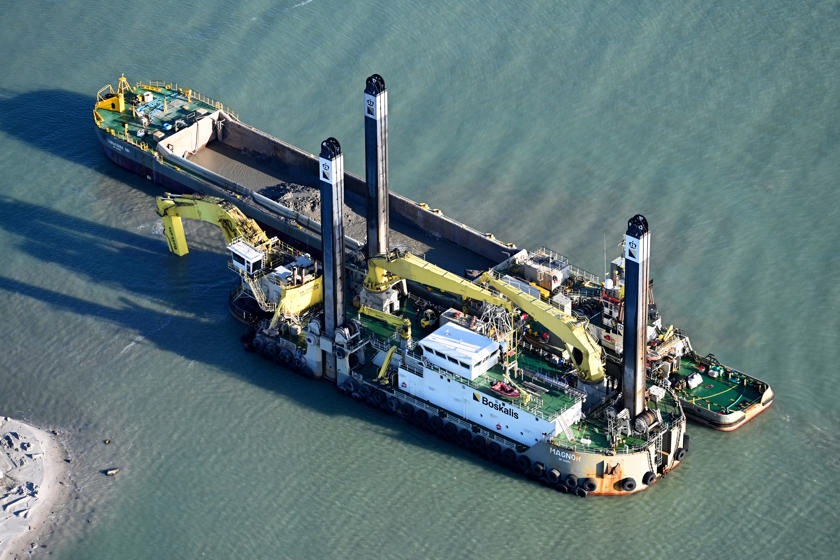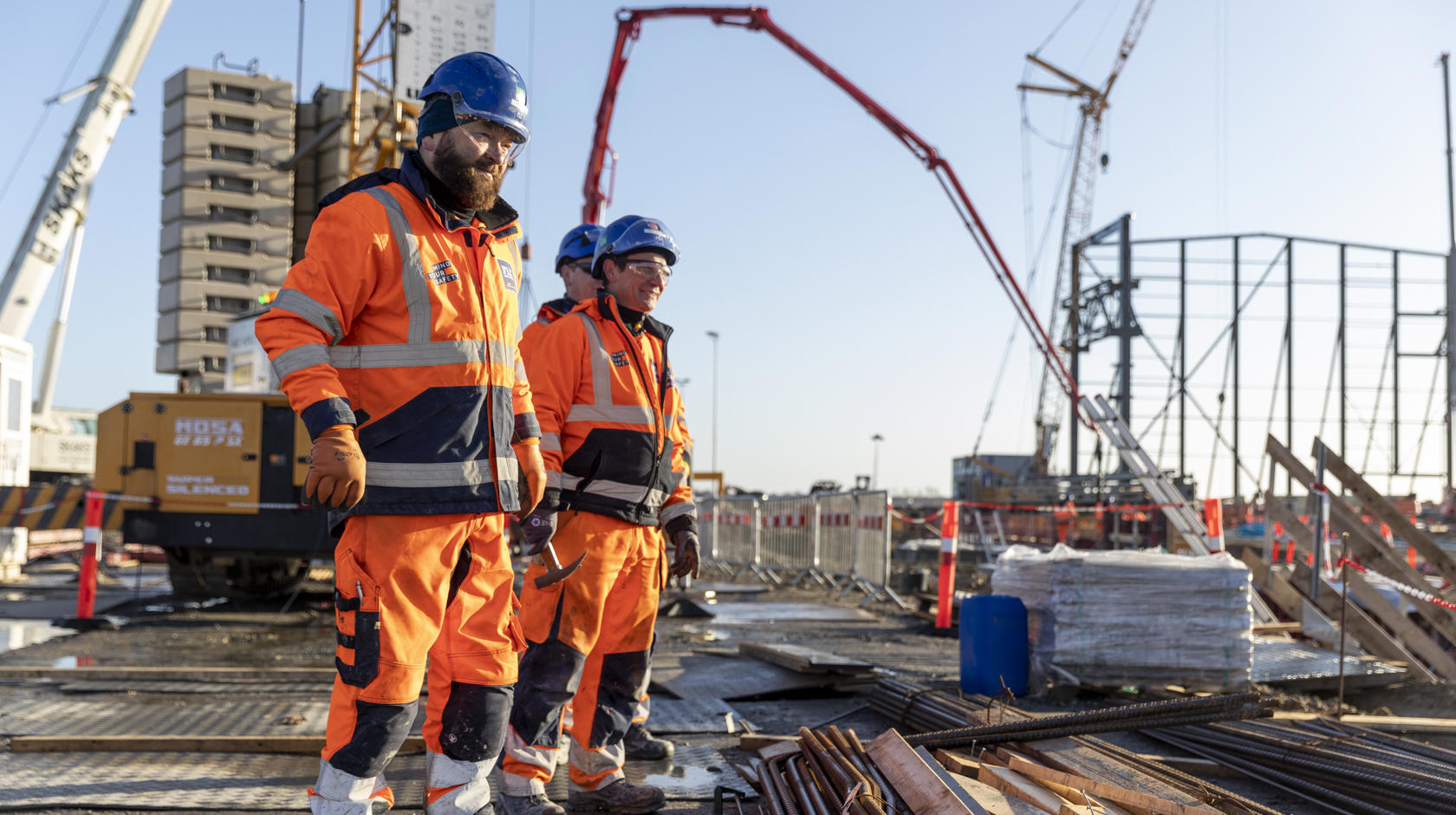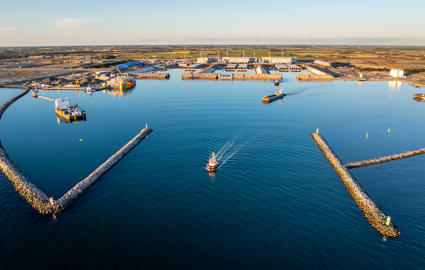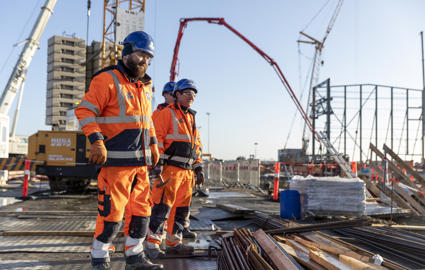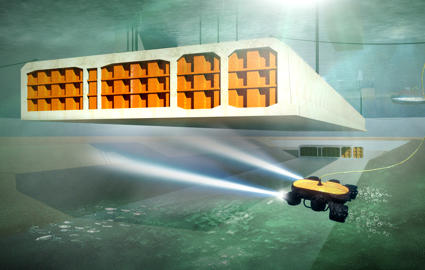The construction site prepared
Before construction of the Fehmarnbelt tunnel can begin, the huge construction site has to be prepared with water, electricity, water channels and access roads so that it is ready for the contractors.
Around the construction site, over four kilometres of cycle paths and footbridges will be built, which will ensure that cyclists and pedestrians can easily and safely bypass the site during construction.
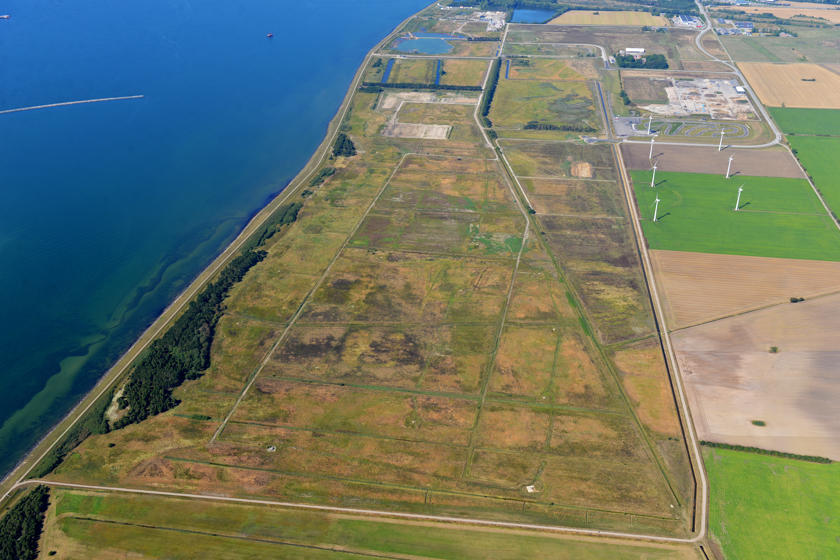
Work harbour has a key role
The contractors' first task will be to establish the huge work harbour at Rødbyhavn. This plays a key role in the construction phase. Delivery of raw materials such as stone, sand, gravel and steel by sea to the construction site will avoid extensive and heavy transport by HGVs.
Furthermore, the work harbour will be responsible for shipping out the finished tunnel elements.
On the German side at Puttgarden, a smaller harbour will also be built to transport raw materials during the construction of the tunnel portal on the German side.
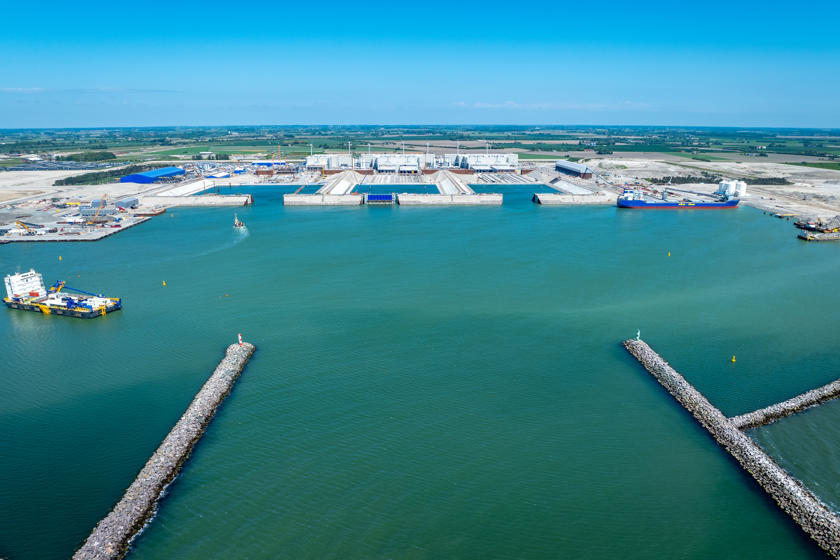
The work harbour will recieve up to 80,000 tonnes of raw materials every week
The world's largest tunnel factory
The next step is to build the tunnel element factory itself. The factory at Rødbyhavn will cover approximately one million square metres and have six production lines for the standard and special elements that are the heart of the tunnel construction.
Slightly west of the production facility, a large accommodation area will be built for the tunnel workers, together with office and administration facilities.
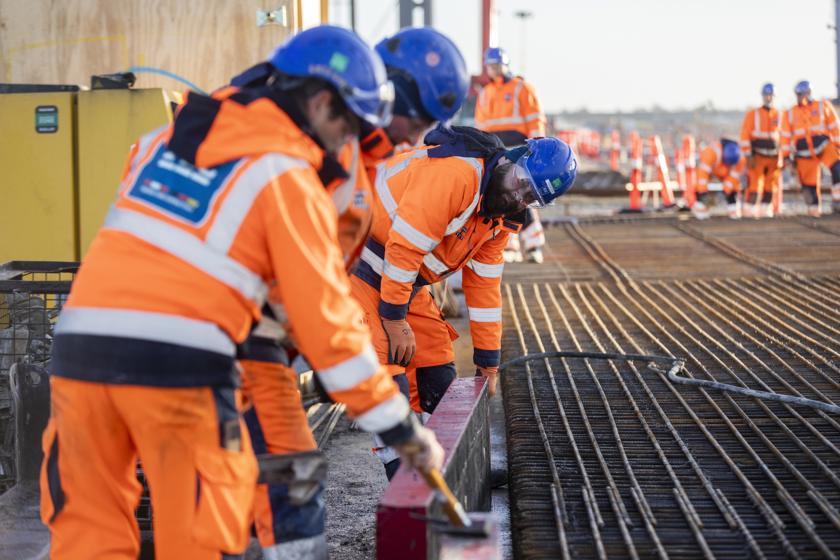
Special vessels dredge the Fehmarnbelt
The 18 km long tunnel trench, into which the elements will be lowered, will be dredged at sea. The dredging will result in around 19 million cubic metres of sand, stone and soil, which will be transformed into a new 300- hectare beach resort at Rødbyhavn.
Specially designed dredging vessels conduct the dredging operation. In the coastal areas dredging barges with backhoes are deployed. Out in the deeper waters so-called grab dredgers and sand suckers are used.
